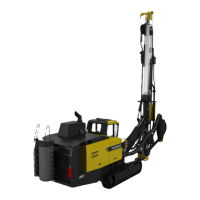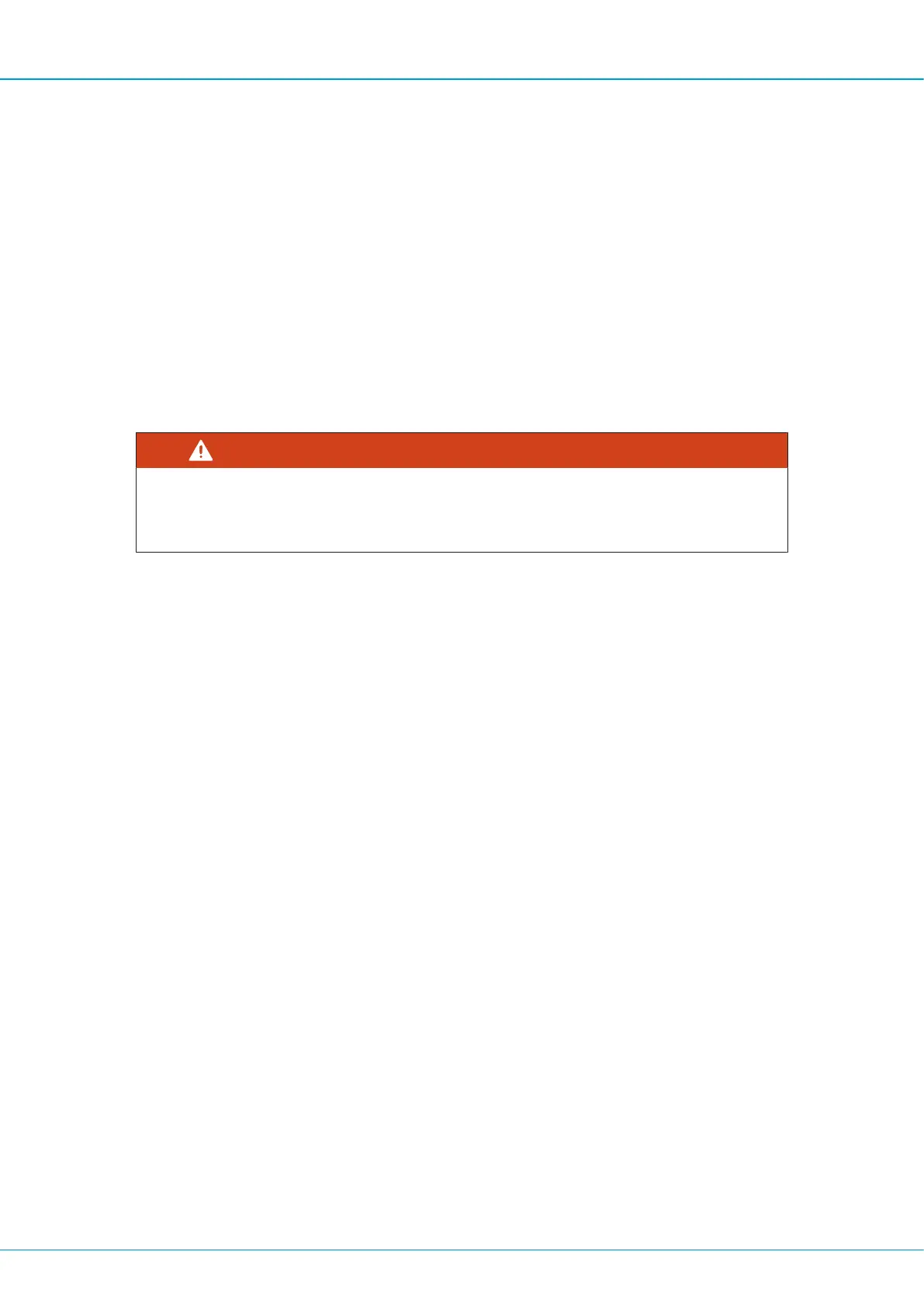SmartROC D65 Tier 4 Final 14 Options
213
Ensure that all screws are at least 8.8 in strength class and that all nuts have Nylock for
the reassembly of these components.
Discharge System
The roller for the sample hose, fitted on the feeder, requires no maintenance as it is made
of nylon.
The end of the sample hose needs to be replaced on occasion. The hose is often used un-
til it breaks, in which case it must be replaced immediately. The hose must have safety
sleeving fitted. When fitting a hose it is important to ensure that the clamps engage in the
retaining groove in the collar.
The sample hoses must have hose protection (sleeving) fitted on both ends of the hose in
the event of a functional breakdown. The hose protection must be attached with shackles
onto the attachment points on the hubs.
DANGER
Serious injury or death
Burst hoses can cause personal injuries.
Cyclone and splitter
The cyclone has replaceable wear plates inside the shell and inlet. These need to be mon-
itored and replaced when they are badly worn.
The cone splitter's knife valves have rope seals. If the sample begins to leak this seal can
be tightened until the leak stops. This is performed by tightening the 8 screws holding the
seal holder in place. This can be performed several times before the seal needs replacing.
Be careful not to tighten too hard as this could cause the knife blade to lock. The rope
seals must be replaced as necessary.
About inner tubes
All components from the rotation head shaft down contain an inner tube.
Along with deflectors the inner tubes are the components that wear the most. There are in-
ner tubes in the down-the-hole hammer, the drill pipes, the different adapters, the air swivel
as well as the shaft that runs through the rotation unit and rotation head. It is not possible
to measure the remaining service life of an inner tube, which often leads to the inner tubes
being used until they break. Apart from the tube in the rotation unit, a damaged inner tube
causes significant pressure loss and it is therefore easy to diagnose. This may lead to the
surrounding components being damaged, and at best lead to continued drilling not being
possible.
All inner tubes are replaceable and are removed through the top of the component by re-
moving the component from the drill string, removing the circlip and sliding the tube out.
The inner tube in the rotation head is hardened and is much thicker than other inner tubes
so it lasts longer, but visual inspection (with regard to wall thickness) is important when
possible (if the swivel is removed or if the seals in the rotation head are replaced).
The cost of a few inner tubes is often made worthwhile by the reduced downtime that the
replacement of all tubes can result in when one of them needs to be replaced.

